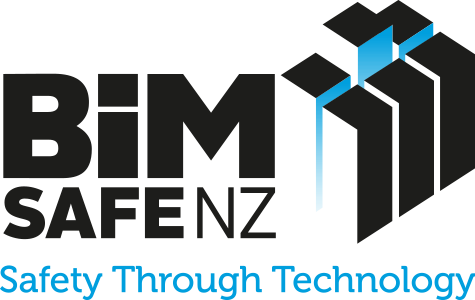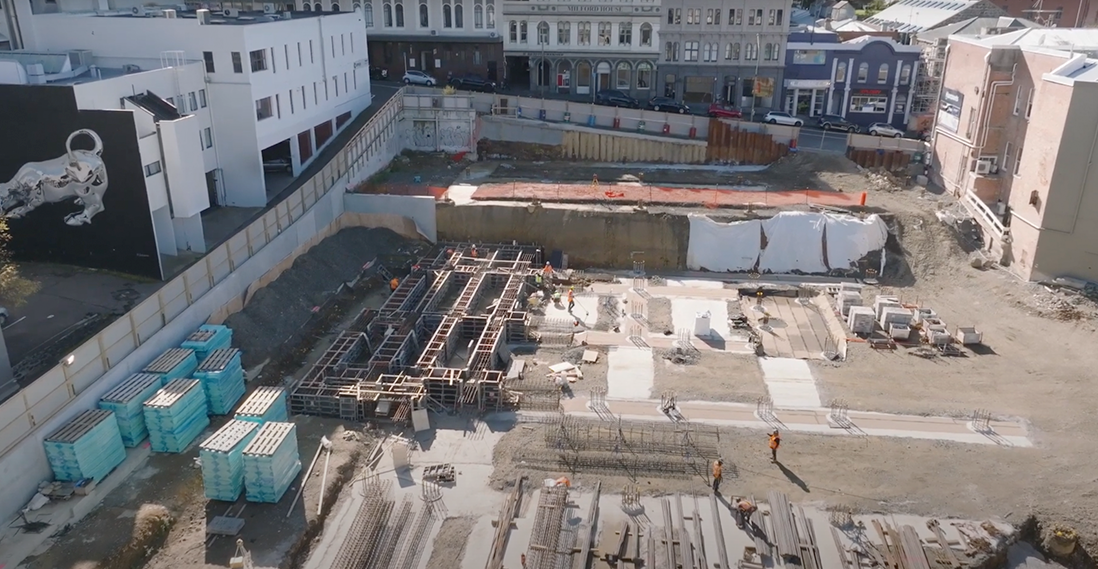ACC Ōtepoti: Visualisation for project communication in piling
Summary
On the ACC Ōtepoti project, the use of reality capture and BIM has improved project communication, clash detection, and quality control during the piling phase. By combining surveyed as-built data with design models, the project team has been able to identify and resolve issues before they impact the construction schedule or safety on site. The team’s approach has focused on reducing the gap between as-planned and as-built, ensuring that work is thoroughly planned before activities start on site, and in particular minimising the need for workers to operate under pressure with heavy elements suspended on the crane.
Background
“The idea is to reduce the gap between as-planned and as-built”
Matt Soppit, Project Manager, Naylor Love
The ACC Ōtepoti project is a new office building for the Accident Compensation Corporation (ACC) in Dunedin, New Zealand. The project is a joint venture between Ngāi Tahu Property and ACC.
The building area is 8,000 square meters over four storeys. The project is located between Dowling Street and Queens Gardens, a site with historical and cultural significance for Dunedin and Ngāi Tahu. The project has encountered a number of challenges, such as complex site conditions (including archaeological finds and neighbouring historic buildings), seismic requirements, a tight schedule, and the COVID-19 pandemic.
The project involves complex foundation works, including piling and ground beams, which require coordination between the design team, main contractor, and subcontractors.
Video
Approach
During construction of the piles and foundation beams, the project team surveyed work in progress to capture as-built information, which was then used to update the BIM model. This allowed them to visualise the upcoming work area and use automatic rule checking (clash detection) in BIM to identify potential clashes in the next stages.
For example, reinforcement sticking out of foundation piles was surveyed and compared with the consultant’s design model and the subcontractor’s model of reinforcing steel to check for clashes with future work, such as ground beam reinforcement and hold-down bolts.
Providing as-built information to the team responsible for the next stage of work, such as precast panels and structural steel members, allowed the team to confirm hole locations in base plates and correct any displacements before heavy elements were lifted by crane.
Outcomes and benefits
- Improved coordination: Sharing as-built information with the team responsible for the next stage of work has improved coordination and reduced the risk of errors and delays.
- Reduced rework: Rework introduces significant health and safety risks, including increased exposure to hazards, higher risk of accidents and injuries, and the potential for worker fatigue, particularly when it is performed under time pressure. By identifying and resolving clashes between reinforcement, hold-down bolts, and other elements before concrete is poured or steel erected, the project team has reduced the need for rework and the associated safety risks.
- Reduced time with loads on the hook: Having the work planned out in the model beforehand, with potential clashes and other issues worked through before lifting starts, minimises the need for work to be carried out while heavy elements are suspended on the crane, creating a safer working environment for all personnel on site.
Lessons learnt
Model sharing helps everyone
Sharing models between consultants, contractor and subcontractors ensures that everyone is working with the same understanding of the project, so misunderstandings or miscommunications that could lead to safety issues can be avoided. It allows challenges to be identified and resolved early in the construction process, before elements are fabricated or installed, reducing exposure to hazardous situations that can arise when workers must make modifications or corrections in the field.
Clash detection is key
Clash detection applied to the federated model can help to automatically identify issues that need to be worked through by the project team, for proactive identification and resolution of hazards and better planning of site works.
As-built data is valuable
Capturing and sharing as-built data supports planning to improve the accuracy and efficiency of subsequent stages of work, reducing the risk of errors or conflicts that could lead to unsafe conditions or the need for rework.

